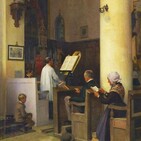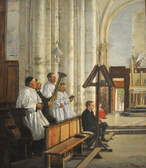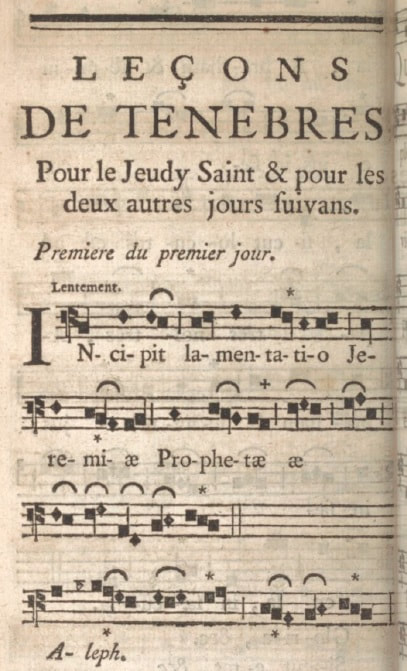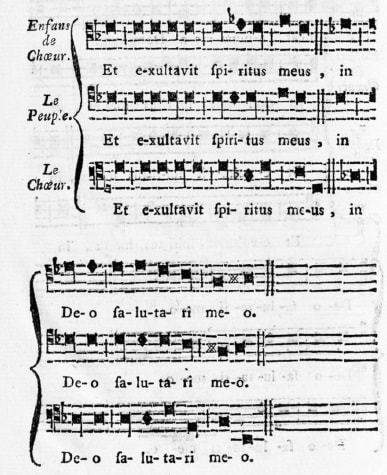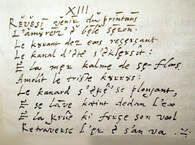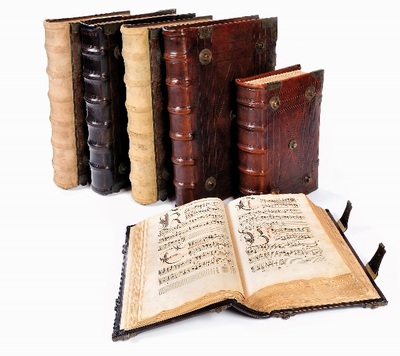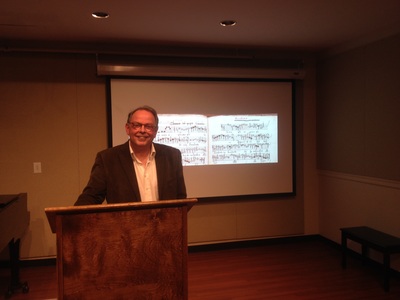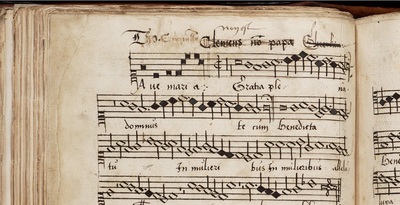
I'm a curious man. "Never trust editions" was Paul Van Nevel's first advice to me.
Since then, the ongoing adventure and exitement of source reading began.
My main interest was and is, of course, Renaissance Music, text underlay and pronounciation.
But there a many side paths.
Open the pdf here below to see a more detailed survey of my musicological projects.
Since then, the ongoing adventure and exitement of source reading began.
My main interest was and is, of course, Renaissance Music, text underlay and pronounciation.
But there a many side paths.
Open the pdf here below to see a more detailed survey of my musicological projects.
| musicology_projects_pdg.pdf | |
| File Size: | 78 kb |
| File Type: | |
2009-2015: LEIDEN CHOIR BOOKS
In 2009 I started with an enormous undertaking, the recording of 6 double-cd's on the Leiden Choirbooks (1549-1570) with EGIDIUS. Each volume was dedicated to one of these six books. Our main aim was to do justice to this magnificent repertoire as to be found in this unique mid 16th century corpus, the largest homogenous collection of polyphony in Europe. In the 1970's of the 20th century Prof. Bernet Kempers edited two volumes on the first Choirbook (Codex A) but since his death no one ever dared to do the rest. I had to select from the sources, and transcribe many many motets and masses and to compare them with occasional existing modern editions. It was my intention to stay as close to the Leiden text as possible. We performed and recorded music by known composers as Crecquillon, Clemens, Willaert, Appenzeller, Richafort, Isaac, Gombert, Lupi, Verdelot, De Rore, but also of lesser known or completely obscure, sometimes local, composers as Flamingus, Jonckers, IJsenbaert, Joachimus de Monte, Cleeff and Potoletus. In 2015 we finished the job. A little monument for a Dutch treasure.
In 2009 I started with an enormous undertaking, the recording of 6 double-cd's on the Leiden Choirbooks (1549-1570) with EGIDIUS. Each volume was dedicated to one of these six books. Our main aim was to do justice to this magnificent repertoire as to be found in this unique mid 16th century corpus, the largest homogenous collection of polyphony in Europe. In the 1970's of the 20th century Prof. Bernet Kempers edited two volumes on the first Choirbook (Codex A) but since his death no one ever dared to do the rest. I had to select from the sources, and transcribe many many motets and masses and to compare them with occasional existing modern editions. It was my intention to stay as close to the Leiden text as possible. We performed and recorded music by known composers as Crecquillon, Clemens, Willaert, Appenzeller, Richafort, Isaac, Gombert, Lupi, Verdelot, De Rore, but also of lesser known or completely obscure, sometimes local, composers as Flamingus, Jonckers, IJsenbaert, Joachimus de Monte, Cleeff and Potoletus. In 2015 we finished the job. A little monument for a Dutch treasure.
|
International Conference at Boston University, 6-7 November 2015
Valorizing Clemens non Papa: Towards a Polycentric Model for Renaissance Music As a perfect bridge between the Leiden Choirbooks and a new great EGIDIUS project, on Clemens non Papa, I had the honour to present my first musicological paper ever at Boston University. The subject was a conflicting attribution within the Leiden Choirbooks. The “Ave Maria” in MS 1442/Codex E, fol. 65v-66r, bears witness to what appears to have been continued disagreement as to the authorship of the piece—with different names being repeatedly entered and crossed out. In succession the names are Crecquillon, Clemens, Gheerkin, and finally Clemens again, now written with an emphatic “ita est” as if to close the discussion for good. Evidently it mattered a great deal to the Leiden singers that they knew for certain who had written this piece, which is in fact quite atypical in terms of its architecture and form. You may find the paper in extenso here below: |
